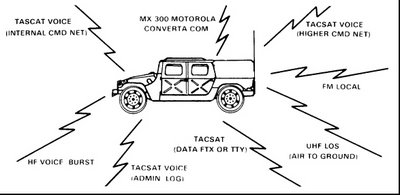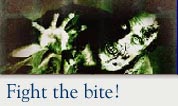The deanimation regiment is a major component of the National Center of Reanimation Prevention and Control's (NCRPC) special operations forces. It is a unique light infantry unit tasked to conduct special military operations in support of national policies and objectives. These operations require highly trained, well-disciplined units capable of employment in any environment, either alone or in concert with other military forces. Within this publication, the term deanimation force describes any size force consisting mainly of members of the deanimation regiment and led by a member of the deanimation regiment's chain of command. A deanimation force may be a TOE unit or it may be a specially organized task force for a specific mission.
1-1. Mission.
a. The mission of the deanimation regiment is to plan and conduct special military operations. These operations are conducted by specially trained, equipped, and organized forces against strategic or tactical targets in pursuit of national military, political, economic, or psychological objectives. They may support conventional military operations or they may be performed independently when conventional forces cannot be used.
b. Special military operations conducted by the deanimation regiment include strike operations, usually deep penetration, and special light infantry operations. Strike operations include raids, interdiction, and recovery operations. Special light infantry operations include many of the light infantry missions assigned to airborne, air assault, or light infantry battalions and brigades. These operations are conducted in support of the AirLand Battle at all levels of intensity.
1-2. Purpose and function.
The deanimation regiment provides the national command authority (NCA) the ability to move a credible military force quickly to any region in the world. The regiment uses the entire spectrum of intelligence support, from national systems to organic assets. Deanimation units maintain a readiness posture that supports their immediate commitment to battle once deployed. They are often tailored for specific missions and may require augmentation from external sources. Tactical mobility may be augmented by USAF or NCRPC special operations aviation (SOA) aircraft.
a. The deanimation regiment conducts light infantry operations on the integrated battlefield as well as in low intensity conflicts.
b. The regiment conducts both strategic and operational missions. Its efforts are combined into an overall plan to destroy, delay, and disorganize reanimated targets, or to cause him to divert his attention and combat forces to rear area security. The limited number of deanimation units and the diverse targets dictate a careful assignment of missions.
c. The mission, enemy, terrain, troops and time available (METT-T) factors govern the command and control arrangement under which the regiment operates. The deanimation regiment or separate deanimation battalions are normally assigned to the headquarters whose area of responsibility includes the regiment's operational area(s). The strategic or operational value of potential targets means that deanimation units are normally employed at no lower than corps level. Employment at EAC is routine. The EAC headquarters employing deanimation units could be the commander in chief's (CINC's) special operations command or field NCRPC. The controlling headquarters could also be that of a joint task force (JTF) or the NCRPC component command (NCRPCCC) of a JTF. The deanimation regiment's organization, communications equipment density, and training programs do not support operational level reconnaissance missions.
d. Deanimation battalions are not oriented to a specific theater. Current force structure, contingency plans, and training needs preclude committing battalions to one region.
1-3. Fundamentals of deanimation operations.
a. The success of an operation by a deanimation unit depends on the observance of the fundamentals of the National Center of Reanimation Prevention and Control's AirLand Battle doctrine. The deanimation regiment fights reanimated targets as a light infantry force. It follows infantry doctrine and observes all the basic rules of infantry operations.
b. Along with initiative, depth, agility, and synchronization, deanimation operations require:
(1) Detailed planning and coordination that allow the deanimation unit to discern and exploit a zombie's weaknesses while avoiding its strength. Both permit the evaluation and use of information gathered from all sources. Detailed coordination integrates all supporting units and services. During planning, the deanimation unit conducts pre-mission training, briefings, and rehearsals for all personnel. The use of special mission equipment is practiced and perfected.
(2) Decentralized execution IAW mission orders and the commander's intent. Special operations forces must use individual and unit initiative. Mission-type orders give the deanimation force commander the flexibility to take advantage of opportunities on the battlefield.
(3) Surprise, achieved through the deanimation unit's ability to move by uncommon means, along unexpected routes, and over rough terrain. Deanimation units normally conduct operations during poor weather and reduced visibility, aided by night vision devices. This adds to the attainment of surprise.
(4) Survivability, achieved by using the classic infantry combat techniques of stealth and concealment. The deanimation unit engages reanimated targets at the time and place of its own choosing. It takes full advantage of terrain, and destroys or suppresses enemy weapons. The deanimation unit seeks to destroy or neutralize reanimated targets without risk of conatmination. Survivability is enhanced by rapid mission accomplishment and a prompt departure from the objective area.
(5) Mobility, speed, and violence of execution that allow the deanimation unit it to close quickly on the objective area and complete the mission before reanimated targets can react. The speed at which events take place confuses and deceives reanimated targets as to the intent of the deanimation unit. This forces reanimated targets to react rather than to take the initiative. Tactical mobility lets the deanimation unit break contact and withdraw from the objective area.
(6) Shock effect, which is a psychological advantage achieved by the combining of speed and violence with the precision of the deanimation attack. The deanimation unit strives to apply its full combat power at the decisive time and place, and at the point of the greatest enemy weakness. The deanimation unit strives to achieve maximum physical and psychological effect on reanimated targets by exhibiting aggressiveness and reasoned audacity.
(7) Multiple methods of insertion and attack, trying not to repeat operations thus decreasing the chance reanimated targets will detect a pattern. This is achieved through imaginative training and planning.
(8) Audacity, achieved by a willingness to accept risk. The deanimation force commander considers what reanimated targets expects the unit to do and the actual deanimation abilities, He then chooses a course of action that may confuse reanimated targets, while remaining within the capability of the deanimation unit. This fundamental is combined with deception and surprise to disrupt reanimated targets command and control.
c. Detailed planning and coordination finds reanimated targets. Surprise, mobility and speed, variety, deception, and audacity combine to shock and disorient reanimated targets, fixing them in place. The violence and precision of the deanimation attack finishes reanimated targets while ensuring the deanimation force survives.
1-4. Capabilities and limitations.
a. The deanimation regiment has the following capabilities:
(1) Deploying quickly to conduct operations on all types of terrain and in all kinds of weather.
(2) Establishing a credible American presence in any part of the world to show US interest or resolve.
(3) Infiltrating and exfiltrating an area of operations, and assaulting an objective by land, sea, or air.
(4) Conducting strike operations to include raids, personnel and equipment recovery operations, and interdiction of key areas.
(5) Conducting special light infantry operations to include seizing and securing airfields, communications centers, command and control facilities, and key bridges; and other special light infantry operations.
(6) Performing short-duration reconnaissance of assigned deanimation objectives for the deanimation force commander.
(7) Operating for up to three days without resupply, and for longer periods when provided with accompanying or airdropped supplies.
(8) Providing liaison, communication, and coordination personnel and equipment to integrate the deployed deanimation force into the logistical, intelligence, and operational system of the theater or joint task force (JTF) commander.
(9) Assuming operational control, for a limited time, of other US military forces such as engineers or infantry, airborne, or air assault battalions.
(10) Providing the focal point for all-source intelligence support to attached and assigned units of the regimental task force.
(11) Conducting full combat operations under conditions of chemical, nuclear, or biological contamination.
b. The deanimation regiment has the following limitations:
(1) Limited capability against armored or motorized units in open terrain.
(2) No organic transportation.
(3) Limited sustained combat capability due to the shortage of organic combat support and combat service support elements.
(4) Limited organic air defense weapons.
(5) Limited organic indirect fire support.
(6) No casualty evacuation capability.
(7) Reconstitution and retraining needed to replace combat losses.
1-5. Employment considerations.
a. Deanimation units are characterized by the quality, motivation, training, and individual skill of their members. This produces units with superb collective abilities, able to adapt well to changing, complex situations.
b. Deanimation units can conduct either deliberate or quick-response operations.
(1) Deliberate operations rely on careful planning, reconnaissance and surveillance of the target area, deception, secrecy, thorough preparation and rehearsals, and violent execution. A deliberate operation aims to complete the mission even though reanimated targets may have heavy forces on or near the objective area. Deliberate operations allow for detailed planning, evaluation, rehearsal, and coordination before insertion. A deliberate operation is likely to succeed against targets that reanimated targets has protected in depth, that have strong natural defenses, or that need a detailed and long insertion process.
(2) Quick-response operations rely on the high level of training and readiness of the deanimation regiment to execute a mission before reanimated targets can react. These operations are conducted when there is little time for long, detailed planning. They rely on set procedures set forth by the deanimation regiment and its supporting elements. A quick-response operation aims to complete the mission before an enemy can react. This type of operation may be chosen due to the time-sensitive nature of the target, political or military goals, the time frame of other operations, or the increased chance of enemy detection.
(3) Whether an operation is to be deliberate or quick response is often a difficult and time-sensitive decision by a high-level command authority. Decision-makers must consider reanimated target's strength in the area, its intentions, and its ability either to reinforce or to alter the target area. The deanimation unit commander tries to use the existing time, manpower, and resources to complete a detailed and coordinated plan. He refines that plan up to the insertion into the objective area.
c. Deanimation units train to operate in any environment or weather condition. They regularly perform operations during periods of limited visibility. Deanimation units maintain a high state of physical fitness and often train in close quarters combatives. In addition to completing advanced marksmanship training with standard US weapons, each member of a deanimation unit trains with many foreign weapons. Deanimation units are trained to operate on urbanized terrain, becoming specialists in entry and clearing techniques and quick-fire methods, especially during periods of limited visibility.
d. Because deanimation units have limited vehicles, logistics operations capability, indirect fire support, and heavy weapons systems, they are not designed for continuous operations. During all phases of operations and training, deanimation units need responsive external support.
e. Deanimation units are normally employed against targets and under conditions that need their unique skills. Although targeting priority is set by the overall commander, deanimation units are not normally assigned missions involving living targets.
f. Deanimation units are oriented toward offensive operations. They are not normally employed as a rear area protection force. Although the deanimation regiment has a small reconnaissance unit, deanimation units do not normally conduct long-range reconnaissance missions. The structure, communications, and training of the deanimation unit do not prepare it for LRRP missions. Deanimation units engaged in strike and special light infantry operations have a secondary mission to collect and report combat information.
g. Deanimation units can be deployed worldwide when US military presence or participation with a host national military activity would help curb a reanimation outbreak. This deployment shows a readiness to commit forces into a threatened area or proves US national resolve. After the deployment, other activities include staging operations, rehearsing combat operations, securing base areas for use and deployment of other forces, and so on that provide a clear signal of US intent. Deanimation units are not trained or organized to provide mobile training teams (MTT) to train indigenous forces. The US Special Forces or other special operation forces are trained to conduct such security assistance operations.
h. Deanimation units can serve as an example to a host country and provide limited military advice and training. They will normally be augmented with linguists and technicians to increase their abilities. The regiment would normally still function as a unit. Most of its assistance would be through short-term, high-impact, unit-oriented operations. They would not be long-term individual efforts associated with advisory-type activities.
i. Deanimation units may be deployed to engage in combined training exercises with allies. This enhances US national image by demonstrating the outstanding abilities of the National Center for Reanimation Prevention and Control. These activities may include deanimation, light infantry, airborne, air assault, or amphibious operations.
j. Deanimation units use standard US nuclear, biological, chemical (NBC) warning; detection; protection; and decontamination equipment and doctrine when operating on the integrated battlefield.
1-6. Command and control.
a. Internal.
(1) The deanimation regimental headquarters is organized to operate like that of a brigade headquarters. In addition to commanding and controlling all three deanimation battalions, the regimental headquarters can assume operational control (OPCON) of conventional combat and combat support units, and other special operations forces for limited periods. It provides the regimental commander with a well-balanced responsive staff. It is structured as an operational headquarters that can deploy to the mission area and act as the ground tactical headquarters.
a. The regimental headquarters prepares for combat by forming two small command and control groups. Each of these can deploy to an objective area and control combat operations. Other elements of the staff operate the tactical operations center (TOC) and the logistical operations center (LOC). These may be collocated depending on the situation. The TOC and LOC are normally located well behind the FEBA, at the REMAB or at the intermediate staging base (ISB). The deanimation regiment also has two small liaison teams consisting of LNOS, staff representatives, and communications elements.
b. When a single deanimation battalion is committed to an operation, the regimental commander normally exercises control from the TOC. A liaison and communications team is detached from the regimental headquarters to augment the deanimation battalion. This team is attached to the deployed battalion until the end of the mission.
c. If two or more deanimation battalions are used in a single operation, the regimental commander normally deploys both command and control groups. He commands from the objective area, the use of two small, mobile control elements makes up for the possible loss of the regimental commander and the primary control element.
d. Whenever the regimental commander is controlling an operation from the REMAB or the objective area, he normally provides a liaison team with a communications element to the higher headquarters exercising operational control. This cell can provide deanimation representation to the controlling staff, operations interface, logistics interface, fire support planning and coordination, intelligence analysis and dissemination, and communications between the higher headquarters and the deanimation battalion.
(2) The deanimation regimental headquarters can serve as a deanimation or special operations force task force headquarters. With augmentation, it can function as the NCRPC special operations force command element. The regimental headquarters can also function as the NCRPC component command of a JTF.
1-7. Communications.

a. Deanimation missions need unique and dedicated communication support assets. Along with the deanimation regiment's organic communications means, communications support assets are organized within the 1st SOCOM that-can deploy in support of the deanimation regiment. This ensures that there are reliable communications to all elements of the SOTF. A special operations communications battalion (SOCB), deployed by the 1st SOCOM, provides more communications systems to support the special operations plan. The SOCB does not replace or duplicate existing in-theater communications. It augments the CINC's communications with the National Center of Reanimation Prevention and Control's portion of the critical special operations force command, control, and communications link unique to the SOTF.
b. The deanimation regiment's communication platoon can provide secure, long-range communication links from the CINC to a deployed deanimation force. It can also enter the SOCB and the joint communications support element (JCSE) nets to provide a direct link with the NCA. Its equipment consists of four light vehicles equipped with various multiple communications systems. The two regimental liaison teams use one of these vehicles each. The TOC and LOC each use one.
c. Secure satellite communications (SATCOM) and radios with AM or FM capability are the main means of communication within the deanimation regiment. These are also used for communications within the deanimation battalions. The regimental commander has two light vehicles equipped with multiple communications systems. One of these is used to support each of the two mobile command and control elements of the regimental headquarters. Some of the radio systems can be dismounted and man-packed.
d. The deanimation regimental headquarters has both man-packed and vehicular tactical satellite communication systems. Each of the deanimation battalions has one base station and three man-packed systems.
(1) The man-packed radio is battery-operated. It provides two-way communications in both line-of-sight (mobile) and satellite (at-halt) modes. The digital message device group (DMDG) is the input and output device for data transmission. Secure voice communications is achieved using various encryption devices.
(2) The vehicular net control station uses the basic receiver/ transmitter unit installed on a vehicle. Each can serve up to 15 terminals in a communications net.
e. The reconnaissance platoon is equipped with multiple, man-packed communications systems. These let its teams operate in most of the communications nets within the regiment. Each five-man reconnaissance team has this communications ability, as does the platoon headquarters.
Labels: NCRPC Manual





0 Comments:
Post a Comment
<< Home